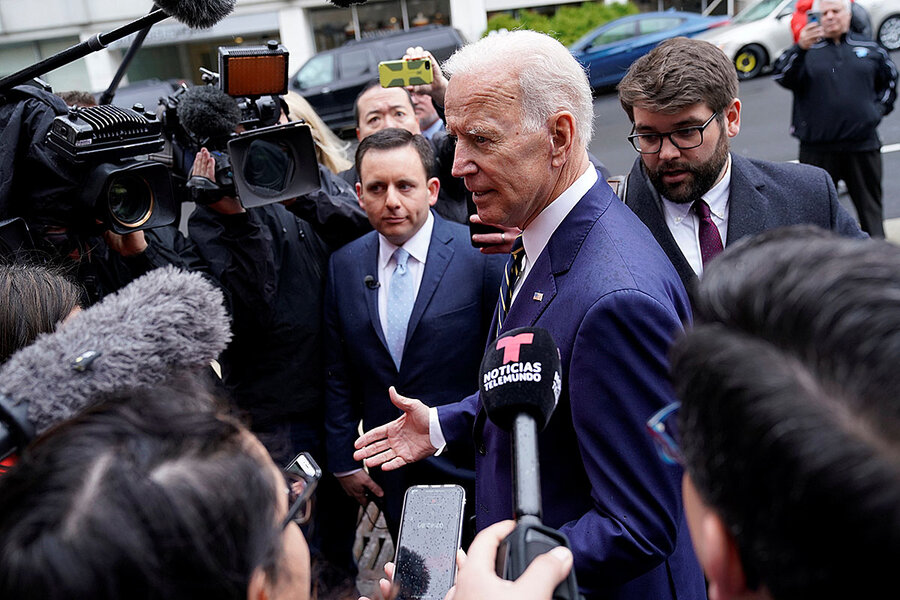Biden firestorm may say more about media than the former veep
Loading...
| Washington
Dear readers:
“Welcome to the world, Joe. You having a good time?”
That was President Donald Trump yesterday, poking fun at former Vice President Joe Biden and the brouhaha that has surrounded him of late. Mr. Biden’s penchant for close squeezes and other physical gestures – once seen as an asset for a retail politician – is being called out as inappropriate by a number of women, who say it made them feel uncomfortable. (Mr. Trump, it’s worth noting, has been accused of much, much worse.)
The story, now on day six, has sparked furious debate from all sides. Mr. Biden’s critics see it as proof that he is too out of touch to be his party’s standard-bearer in 2020. Supporters see it as evidence that the Democrats are morphing into a party of unforgiving scolds.
A more important question may be: should this matter really be dominating the news?
Media feeding frenzies are nothing new. But in the social media era, they seem to be growing both bigger and smaller at the same time. An alleged offense – sometimes involving elected officials, sometimes just private citizens – is given wall-to-wall, oxygen-sucking, pick-your-cliché coverage for a period of days (or sometimes hours that feel like days). And then the spotlight moves on.
Remember the controversy surrounding Virginia Gov. Ralph Northam and the racist picture in his medical school yearbook? These days, as the New York Times recently noted, it’s as if it never happened.
The Times lists a number of reasons for Virginia’s return to “surreal normalcy.” As a matter of pure politics, once the governor refused to resign, his party had few good options other than to try to quietly put the whole matter aside. Moreover, polls showed voters were far less bothered by the decades-old photo than public officials and commentators.
“A feeding frenzy is typically not a mirror but a distortion of public opinion,” writes David Greenberg , a professor of history and media at Rutgers University, in a Times op-ed. “We need to remember that when we grill candidates about the taboo du jour, we aren’t helping ourselves understand their suitability for leadership but rather working through other cultural concerns. As for character, the real test of it may be whether a politician has the fortitude and self-confidence to brave the media storm.”
Let us know what you’re thinking at csmpolitics@csmonitor.com.
Why We Wrote This
Media feeding frenzies today are both bigger and smaller – elevating all kinds of offenses into full-blown controversies before quickly moving on.






